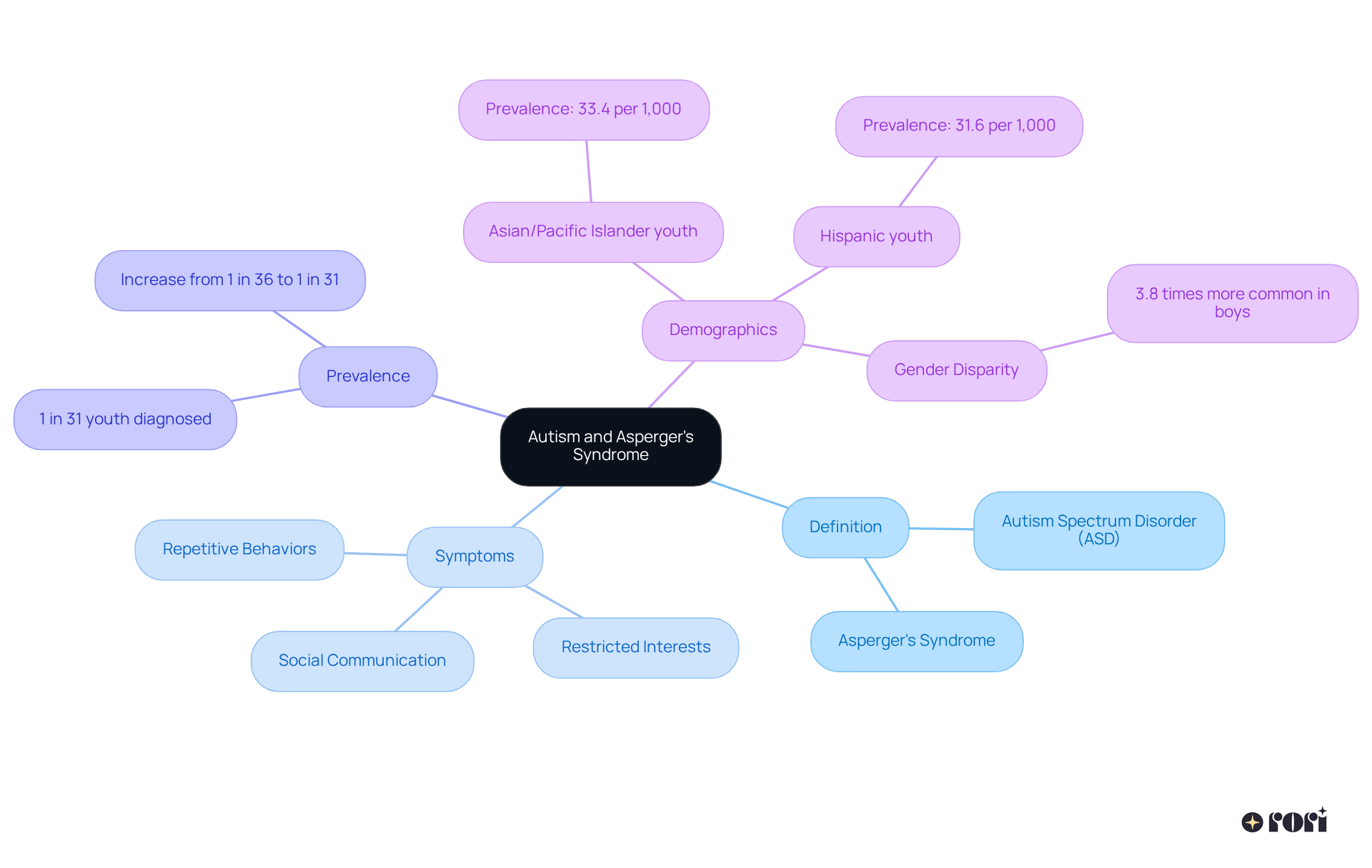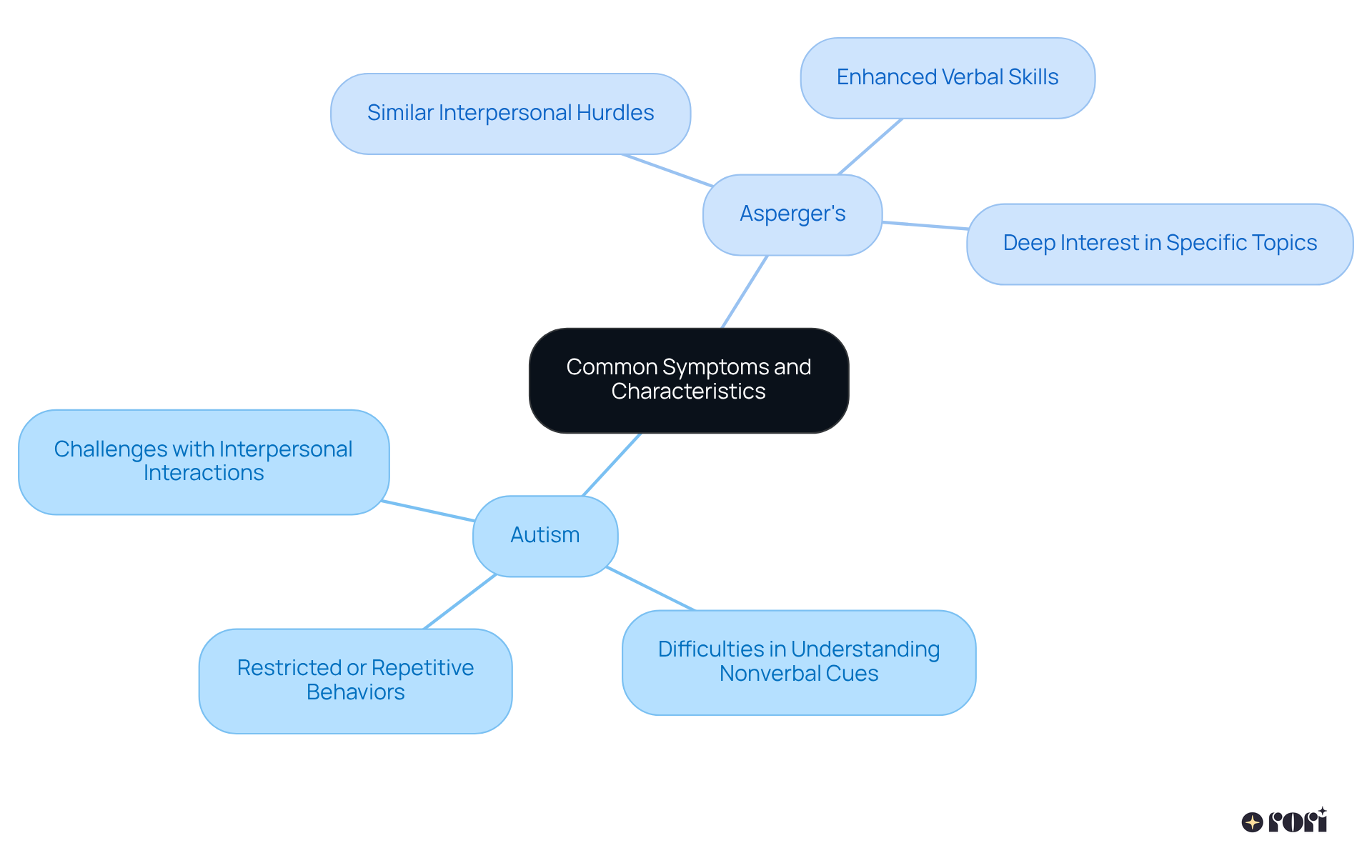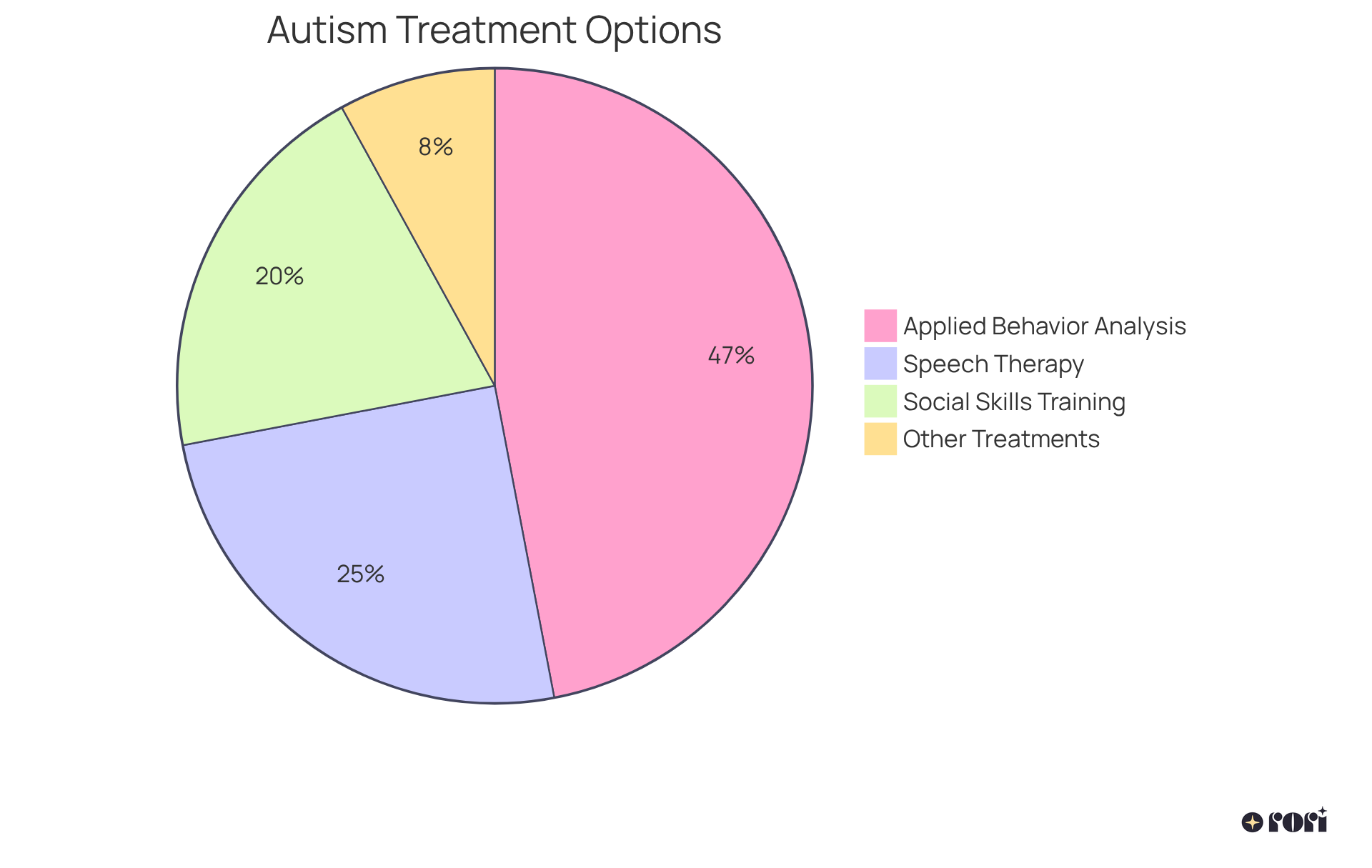Autism and Asperger's syndrome are quite similar, as both are part of the Autism Spectrum Disorder (ASD). They share some challenges, especially in social communication and having restricted interests. However, they differ when it comes to symptom severity and language development.
For instance, individuals with Asperger's usually show milder symptoms and don’t face significant delays in language. This distinction reflects our evolving understanding of these conditions within the broader autism spectrum.
Let’s explore this together!
The landscape of neurodevelopmental conditions is quite complex and always evolving, especially when we talk about Autism Spectrum Disorder (ASD) and its historical counterpart, Asperger's syndrome. As awareness grows, so does our need for clarity around these terms—what sets them apart, and where do they overlap?
Exploring the nuances between autism and Asperger's not only shines a light on individual experiences but also highlights the importance of tailored interventions. With rising diagnosis rates and shifting definitions, how do these two conditions truly compare? And what implications does this have for those on the spectrum? Let’s explore this together!
Autism, or Autism Spectrum Disorder (ASD), is a multifaceted neurodevelopmental condition that presents challenges in social communication, restricted interests, and repetitive behaviors. It covers a wide range of symptoms and severity levels, reflecting the diverse experiences of those affected. You might have heard of Asperger's disorder, which raises the question of whether autism and Asperger's are similar, as it was once seen as a separate diagnosis but is now part of the broader ASD category. Individuals with Asperger's often show milder symptoms and typically don’t experience significant delays in language development. This shift in understanding raises the question of how much autism and Asperger's are similar, highlighting that each individual has unique strengths and challenges.
Recent studies indicate that the prevalence of ASD has increased, with current estimates showing that about 1 in 31 youth in the U.S. are diagnosed with the disorder. This underscores the importance of awareness and early intervention. Did you know that ASD is over three times more common in boys than in girls? Plus, occurrence rates vary across different racial and ethnic groups, with figures like:
The rise in diagnosis rates reflects evolving diagnostic standards and a growing recognition of the condition within the autism spectrum.
Let’s explore this together! Understanding autism can be a journey, and we’re here to help you every step of the way!

The term 'autism' was first introduced by Swiss psychiatrist Eugen Bleuler back in 1911. Initially, it described a symptom of schizophrenia. Fast forward to the 1940s, and we see pioneers like Leo Kanner and Hans uncovering unique behavioral patterns in young individuals. This led to the official acknowledgment of whether autism and Asperger's disorder are similar.
Asperger's syndrome, named after Hans, focused on young individuals who faced social challenges but had intact language abilities. However, a significant shift took place in 2013 when the DSM-5 reclassified Asperger's syndrome, leading to discussions about whether autism and Asperger's are similar as part of the broader autism spectrum. This change reflects a more nuanced understanding of these conditions, highlighting the importance of tailored care approaches.
Did you know that recent statistics indicate autism prevalence in the U.S. has reached 2.7% among children? In 2022, the identification rates for children aged 5 to 8 were at 30.3 per 1,000. It's remarkable to see how identification rates have surged across different demographics, with a 305% increase among girls and a staggering 450% rise among young adults aged 26 to 34.
Experts, including insights from Luke P. Grosvenor, stress the need for expanded healthcare services to address these rising rates. The evolution of autism terminology over the decades prompts the inquiry of how much are autism and Asperger's similar, underscoring our growing recognition of the spectrum's complexity and the necessity for personalized interventions.
Furthermore, case studies, including results from the National Survey of Children’s Health, reveal differences in age at identification. This highlights the crucial need for earlier intervention. Overall, these developments illustrate the ongoing changes in autism diagnosis practices and their implications for individuals on the spectrum. Let’s explore this together and see how we can support one another in this journey!

When discussing whether autism and Asperger's are similar, typical symptoms can include:
For those with Asperger's condition, they might face similar interpersonal hurdles, which raises the question of whether autism and Asperger's are similar, but they often shine with enhanced verbal skills and a deep interest in specific topics. 🌟
While both groups might struggle with communication, it's important to note that individuals with Asperger's syndrome usually don't experience significant delays in language development. Recognizing these symptoms is really crucial for parents and caregivers. It helps them seek the right support and interventions that can make a world of difference. Let’s explore this together! 💪

Identifying whether autism and Asperger's syndrome are similar involves thorough evaluations by qualified professionals, including developmental assessments and behavioral observations. According to the DSM-5 criteria, ongoing challenges in interpersonal communication and restricted interests are key for a diagnosis. Treatment options are tailored to individual needs and can include:
Importantly, early intervention can make a big difference! Research shows that individuals who receive early ABA therapy often experience significant improvements in behavior and social skills. In fact, studies suggest a 47% boost in communication abilities and a 38% increase in social interactions. Isn’t that encouraging? Plus, about 68.4% of youths aged 8 years with autism have a documented diagnosis, which underscores the importance of timely and accurate identification.
As of 2023, 1 in 36 children in the U.S. is diagnosed with autism spectrum disorder, highlighting how common this condition is. By addressing these needs early, particularly considering the differences in diagnosis age across socioeconomic backgrounds, we can help children develop vital skills for independence and social interaction. This ultimately paves the way for a brighter future. Let’s explore this together!

Understanding the nuances between autism and Asperger's syndrome is essential in recognizing the broader spectrum of autism spectrum disorder (ASD). Both conditions share common traits, like challenges in social interactions and restricted interests, but the difference lies in the severity and presentation of symptoms. Asperger's syndrome features milder symptoms and intact language development, which has led to its reclassification under the umbrella of ASD. This change highlights the need for personalized approaches to diagnosis and treatment.
The article highlights how autism terminology and diagnostic criteria have evolved over time. As prevalence rates rise and the importance of early intervention becomes clearer, awareness and understanding are crucial. It’s important to recognize the need for tailored support and the benefits of early therapies, which can significantly enhance communication and social skills.
Ultimately, fostering a deeper awareness of autism and Asperger's syndrome not only aids in better support for individuals on the spectrum but also promotes inclusivity and understanding within society. Engaging with this knowledge can empower families and communities to advocate for appropriate resources and interventions. Together, we can ensure that every individual receives the support they need to thrive. Let’s explore this journey together!
What is Autism Spectrum Disorder (ASD)?
Autism Spectrum Disorder (ASD) is a complex neurodevelopmental condition characterized by challenges in social communication, restricted interests, and repetitive behaviors. It encompasses a wide range of symptoms and severity levels.
How does Asperger's Syndrome relate to autism?
Asperger's Syndrome was once considered a separate diagnosis but is now classified under the broader category of Autism Spectrum Disorder (ASD). Individuals with Asperger's typically exhibit milder symptoms and do not experience significant delays in language development.
What are some common characteristics of individuals with Asperger's?
Individuals with Asperger's often show milder symptoms of autism, particularly in social communication, and usually have typical language development.
What is the prevalence of ASD in the U.S.?
Current estimates indicate that approximately 1 in 31 youth in the U.S. are diagnosed with Autism Spectrum Disorder (ASD).
Are there differences in ASD prevalence based on gender?
Yes, ASD is over three times more common in boys than in girls.
Does ASD prevalence vary across different racial and ethnic groups?
Yes, occurrence rates of ASD vary among different racial and ethnic groups, with estimates such as 33.4 per 1,000 for Asian/Pacific Islander youth and 31.6 per 1,000 for Hispanic youth.
Why has the rate of ASD diagnoses increased?
The rise in ASD diagnosis rates reflects evolving diagnostic standards and a growing recognition of the condition within the autism spectrum.